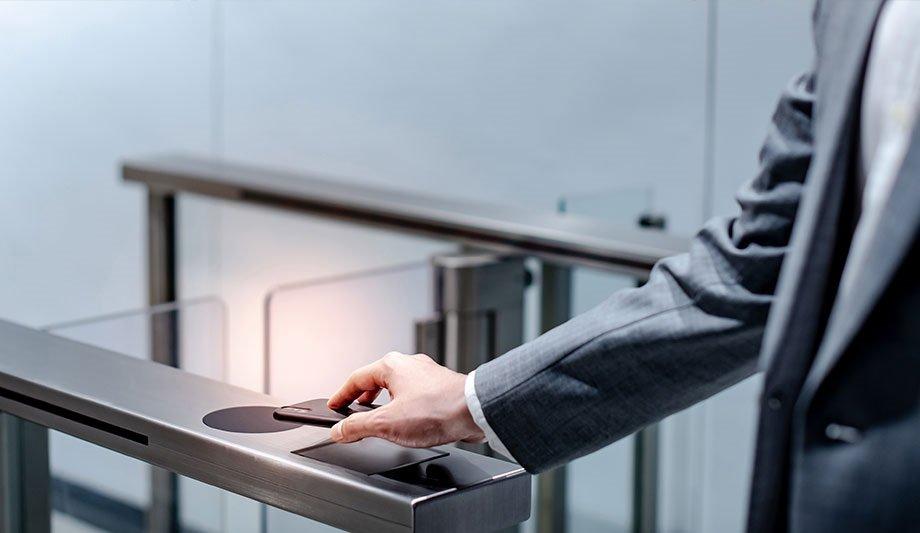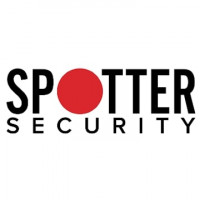Why Access Control Systems Are Crucial for Data Security

Strong 8k brings an ultra-HD IPTV experience to your living room and your pocket.
When it comes to protecting sensitive information, data security has become one of the most critical concerns for businesses and organizations worldwide. In an era where cyber threats and data breaches are growing in both sophistication and frequency, robust security measures are no longer optional—they're a necessity.
One of the most effective ways to ensure the protection of sensitive data is through access control systems. But why are these systems so crucial for data security?
The Increasing Importance of Data Security
Data has become the backbone of every industry, from healthcare to finance, and from education to government services. Organizations store vast amounts of sensitive information, including personal data, financial records, intellectual property, and business-critical information.
As the value of data increases, so do the risks of cyber-attacks, insider threats, and unauthorized access. Inadequate security measures can lead to catastrophic consequences, including data breaches, financial loss, legal penalties, and reputational damage.
This is where access control systems come into play. Access control is not just about locking doors—it is about ensuring that only authorized individuals can access specific data, systems, and areas within an organization.
What Are Access Control Systems?
Access control systems are technologies or protocols designed to regulate who can enter certain locations (physical access control) or who can access particular data and systems (logical access control). These systems enforce security policies that ensure individuals only have access to the resources they are authorized to use.
By managing access to sensitive data, access control systems reduce the risk of unauthorized access and protect the organization's most valuable asset: information.
Access control systems come in various forms, such as biometric scanners, RFID badges, PIN codes, and multi-factor authentication methods. These systems can be integrated into physical spaces like offices and data centers or digital environments like corporate networks and cloud-based platforms.
Types of Access Control Systems
There are several types of access control systems, each designed to serve specific security needs. The choice of the system depends on the organization's size, security requirements, and budget. The most common types include:
Discretionary Access Control (DAC): In this system, the owner of the resource (such as a file or folder) has full control over who can access it. DAC is highly flexible, but its downside is that it can sometimes be less secure, as it gives individuals the authority to assign permissions to others.
Mandatory Access Control (MAC): MAC is a more rigid system, often used by government or military institutions. Access decisions are made by a central authority based on predefined security levels. Individuals cannot change access permissions.
Role-Based Access Control (RBAC): RBAC assigns access based on the user's role within the organization. This system is widely used because it simplifies access management. For example, a manager might have access to certain data that employees in lower positions cannot see. This structure ensures a streamlined, efficient way of granting permissions.
Attribute-Based Access Control (ABAC): ABAC takes access control to another level by evaluating various attributes, such as time of access, location, and the user's relationship to the data. This system is particularly effective for larger organizations with dynamic and complex security needs.
Why Are Access Control Systems Essential for Data Security?
Access control systems serve as the first line of defense in protecting sensitive data. Here's why they're critical:
Preventing Unauthorized Access
The primary function of an access control system is to prevent unauthorized users from gaining access to data. Whether it's physical access to a secure facility or digital access to a sensitive database, an access control system ensures that only verified individuals can enter. This significantly reduces the risk of data breaches, which often occur when unauthorized personnel exploit system vulnerabilities or steal credentials.
Monitoring and Auditing Access
Modern access control systems don't just restrict entry—they also monitor it. These systems generate logs of who accessed what, when, and where. Such audit trails are crucial for compliance with data protection regulations like the GDPR, HIPAA, or CCPA. In the event of a data breach, these logs provide forensic evidence that can help identify the root cause and implement necessary corrective actions.
Protecting Against Insider Threats
Not all threats come from external hackers. Insider threats—where employees or contractors with authorized access intentionally or accidentally compromise data—are a growing concern. Access control systems help mitigate this risk by enforcing the principle of least privilege, ensuring that individuals can only access the data necessary for their role. By limiting access, organizations reduce the potential damage insiders can cause.
Enhancing Compliance
In today's regulatory environment, compliance with data protection laws is a critical concern for businesses across all industries. Access control systems are essential for demonstrating compliance with these regulations. For example, many data protection laws require organizations to have measures in place to ensure that sensitive data is only accessible to authorized personnel. Access control systems provide the infrastructure needed to meet these requirements.
Mitigating Human Error
One of the biggest risks to data security is human error. Employees may inadvertently expose sensitive information or grant unauthorized access if there are no controls in place. Access control systems help minimize these risks by automating the process of granting permissions and by enforcing stringent access policies.
Supporting Remote Work Environments
As more companies embrace remote work, access control systems have become even more crucial. With employees accessing corporate networks from different locations, organizations must ensure that remote workers can securely access sensitive information. Cloud-based access control systems and multi-factor authentication methods have become essential tools for safeguarding data in decentralized work environments.
Access Control and Cybersecurity Integration
To fully secure an organization’s data, access control systems must be integrated with broader cybersecurity measures. This includes firewalls, encryption, anti-malware tools, and intrusion detection systems. Access control is a critical component of a multi-layered security strategy, also known as "defense in depth." This approach ensures that even if one layer of security is breached, others remain intact, protecting sensitive data.
Moreover, access control systems can integrate with identity and access management (IAM) solutions to provide an even higher level of security. IAM solutions offer a centralized way to manage user identities and access privileges across an organization. By integrating access control with IAM, organizations can automate the process of granting and revoking access, ensuring that only the right individuals have access to critical resources.
The Role of Access Control in Data Encryption
Access control systems also play a vital role in data encryption. Many access control solutions work hand-in-hand with encryption technologies to protect data both at rest and in transit. By controlling who can access encrypted data and ensuring that sensitive information is only visible to authorized users, organizations can further bolster their data security measures.
For example, access control systems can ensure that only users with the correct encryption keys can view or manipulate sensitive data, making it significantly harder for unauthorized users to gain access even if they manage to bypass other security measures.
Challenges and Considerations in Implementing Access Control Systems
While access control systems are essential for data security, implementing them comes with its own set of challenges. Organizations must consider the following when deploying access control systems:
Scalability: As organizations grow, their access control needs become more complex. It's crucial to choose a system that can scale to accommodate new users, roles, and devices without compromising security.
User Experience: Security measures should not hinder productivity. A well-designed access control system strikes a balance between security and user experience, ensuring that employees can easily access the resources they need to do their jobs.
Integration: Access control systems must integrate seamlessly with existing IT infrastructure and other security tools. Poor integration can create security gaps and complicate access management.
Cost: Implementing access control systems can be costly, especially for smaller organizations. However, the cost of a data breach is often far greater than the investment in security infrastructure. Organizations should view access control as a long-term investment in data security.
Conclusion
In today's world, where data is a critical asset, access control systems have become indispensable for ensuring data security. From preventing unauthorized access to monitoring user activity and enhancing compliance, these systems offer a robust framework for protecting sensitive information. By integrating access control with broader cybersecurity measures and addressing potential challenges, organizations can create a secure environment that safeguards their data and their business operations.
To achieve the highest level of protection, businesses should consider advanced solutions like Symantec Network Access Control, which provides comprehensive access control management and ensures that only authorized users can access critical data. By doing so, organizations can stay one step ahead of potential threats and maintain the security of their most valuable asset—data.
Note: IndiBlogHub features both user-submitted and editorial content. We do not verify third-party contributions. Read our Disclaimer and Privacy Policyfor details.



